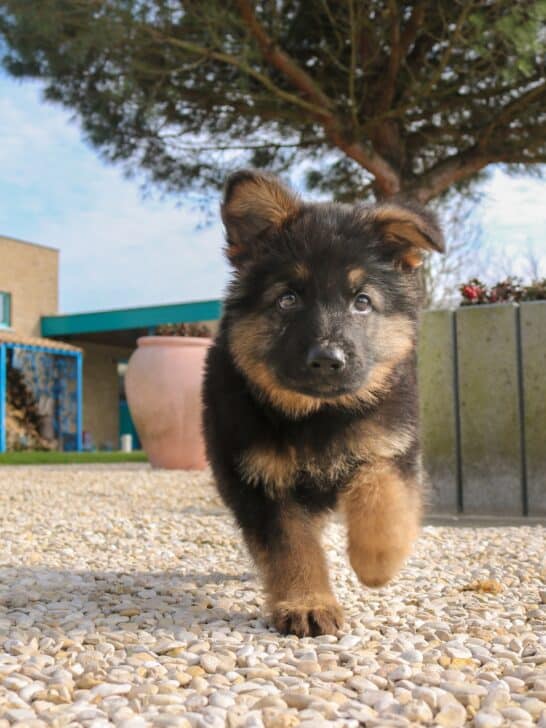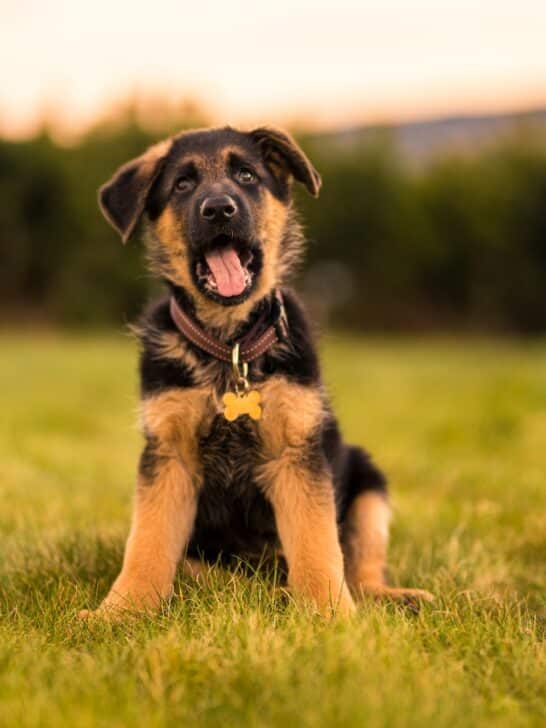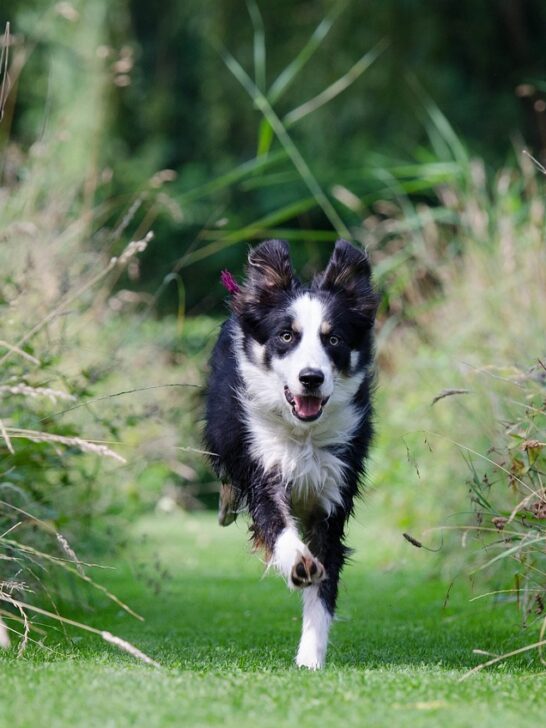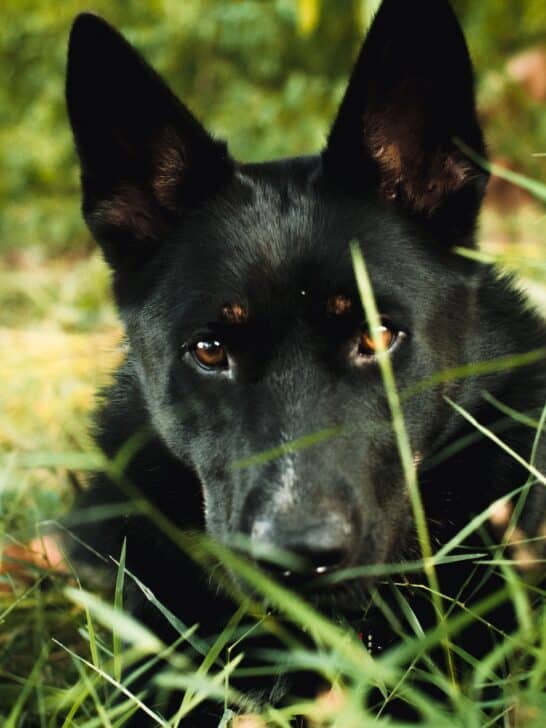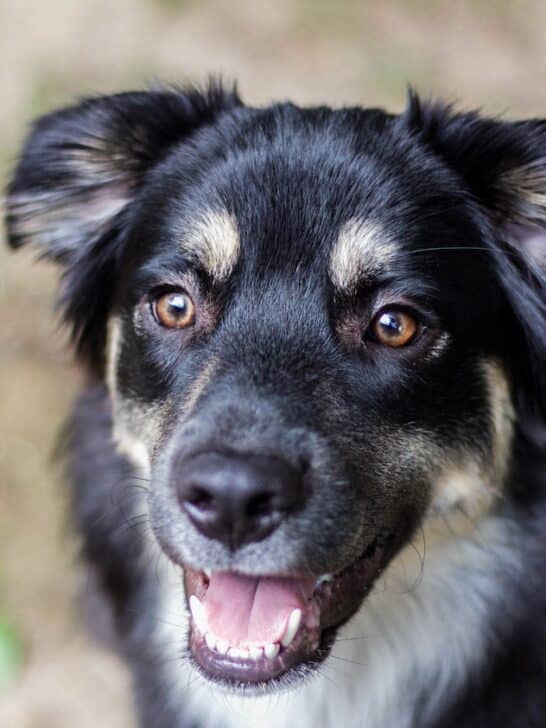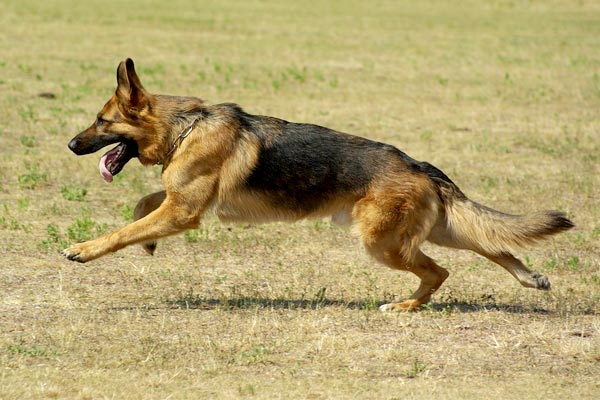German Shepherd Training Commands: The Ultimate Guide To Train Your GSD
The German Shepherd is a dog that is internationally beloved and popular. In the United States, the American Kennel Club (AKC) states that the GSD is the second most popular choice for companion canines (out of 196 total breed choices).
Since these dogs live to be with their people, in theory, this makes the German Shepherd the ideal student during dog training.
But it is important to be very consistent and clear when training these intelligent and sensitive dogs. You want to use only positive training methods and you want to know exactly what commands you are going to use for each skill you want your dog to learn.
In this article, we do a comprehensive review of the top training commands you may want to use with your German Shepherd puppy or rescue dog.
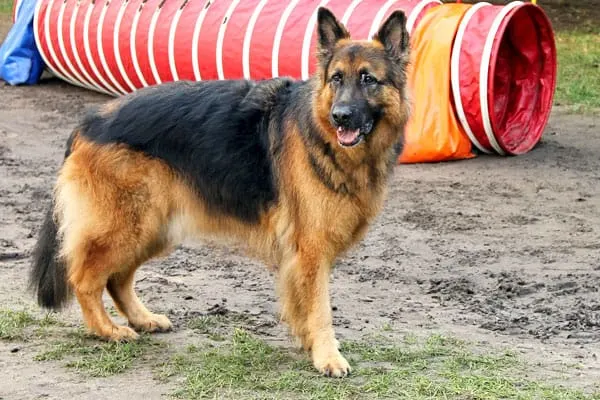
Common Commands Your GSD Needs To Learn
As the American Kennel Club (AKC) points out, German Shepherds are large breed herding dogs that are known for their intelligence, tireless work ethic, bravery, and loyalty.
A well-trained German Shepherd dog will lay down their life for their handler and everyone in their “herd.”
Conversely, a poorly trained and under-socialized German Shepherd can become a real danger to themselves, their family, and their community, including other animals as well as people.
It is vitally important to begin training your German Shepherd from the very first day your dog comes home to stay. The training commands your dog learns will help them learn how to be a safe and happy member of your family and the local community.
Watch a World Championship Dog Trainer Working With a German Shepherd
This amazing routine on YouTube taken from the 2018 World Cup showcases what is truly possible in terms of training a German Shepherd in a working K-9 role.
While you might never need to train your GSD to this advanced level, there is no reason why your dog cannot learn to be just as responsive to the basic commands you need them to learn.
This is ultimately for your safety, for your dog’s safety, and for the safety of others in your community.
What System of Training Commands Should You Use?
If you are training a working dog breed like the German Shepherd for the very first time, you may not be aware of how many different training systems exist for dogs today.
One of the most popular systems is called Schutzhund. The word literally translates to mean “protection dog.”
With Schutzhund, temperament is everything. Typically a dog is identified in puppyhood as being a potential candidate for this military-grade protection dog training regimen.
As VonLotta Kennels explains, the whole Schutzhund training regimen is also designed to bring out the best in your German Shepherd.
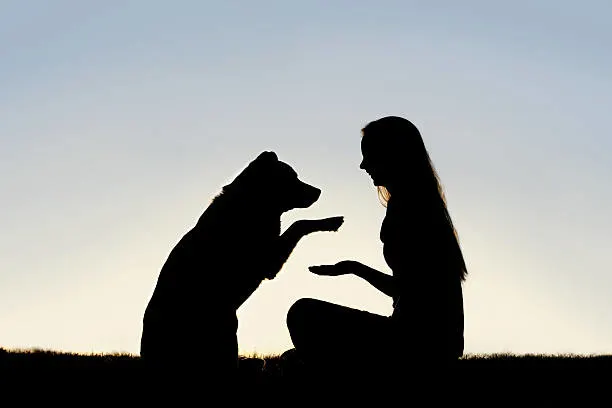
All of the following breed qualities are enhanced and emphasized with Schutzhund:
- Intelligence.
- Strength.
- Agility.
- Nose work.
- Courage.
- Endurance.
- Perseverance.
- Bond with the trainer.
- Steadiness.
- Work ethic.
But you don’t have to use Schutzhund to train your GSD. In fact, one big difference between Schutzhund training and many other training systems is that the commands are traditionally issued in German.
There are lots of different training systems, however, including some like MondioRing that is integrated into canine athletics competitions.
These types of programs serve a dual purpose: they provide great exercise and enrichment for your smart, energetic GSD and they also offer a great training foundation with common commands.
You may want to just start with basic training commands, however, and decide later whether you want to enroll your German Shepherd in a more formal program of canine athletics or K-9 protection dog training protocols.
How Many Training Commands Can Your German Shepherd Dog Learn?
Of course, you will want to start with the most basic training commands so your GSD puppy or rescue dog has a working vocabulary you can use with each other.
But after those basics are hammered out, is there a limit to how many training commands your dog can learn and remember?
This is a great question that a canine researcher named Stanley Coren, Ph.D., researched for the American Psychological Association (APA).
He said that dogs, on average, have commensurate intelligence to a two-year-old human child.
Coren stated in his study that the typical dog can learn 165 words. A really smart dog may be able to learn upwards of 250 words.
Coren noted that dogs can also learn by observing people and other dogs (which is why it is important not to separate a puppy from the mother dog and litter too soon). And dogs can learn simple mathematics as well.
Three Types of Canine Intelligence
In the same study for the APA, Coren noted that there are three basic types of canine intelligence.
This is important to know because learning training commands involve a particular type of canine intelligence.
The three types of canine intelligence are as follows:
- Instinctive intelligence: the type of work that dog has been bred to do.
- Adaptive intelligence: how good a dog is at problem-solving.
- Obedience/working intelligence: learning new training commands in “school.”
According to Science Alert, German Shepherds score as the third smartest dog in this last form of canine intelligence.
So your GSD is quite likely in the “really smart dog” category and may well be capable of learning 250 training commands or even more!
Naming Your Dog and Training Your Dog
One of the biggest things that many new dog owners overlook is the importance of choosing their new dog’s name.
The name you choose needs to be very distinctive and different from the training commands you want your dog to learn.
Why is this important?
Consider the popular dog name of decades past – “Fido.” This can sound very similar to a common training command – “lie down.” It can also be confused with training commands like “go.”
As the New York Times points out, a name like “Kit” could be confused with “sit” and a name like “Ray” could be confused with “stay.”
So while you do want the name you choose for your German Shepherd to be sufficiently short and percussive that it is easy to say and hear, it is worth considering whether the name you like might be confusing to your dog during training sessions.
Two Different Types of Training Signals
Different dog trainers may have different theories on whether voice signals or hand signals work best with different dog breeds.
Voice signals tend to be the most popular choice because they can be used even in low light. But hand signals may work better when your dog is farther away, especially if you have a naturally soft speaking voice.
You may also choose to combine voice and hand signals to reinforce the command and make sure you have both options available to communicate with your dog in different situations.
Okay, so now that you have a basic overview of the most important things to know about training a dog, let’s dive into an overview of the most commonly used canine training commands starting from the most basic level on up.
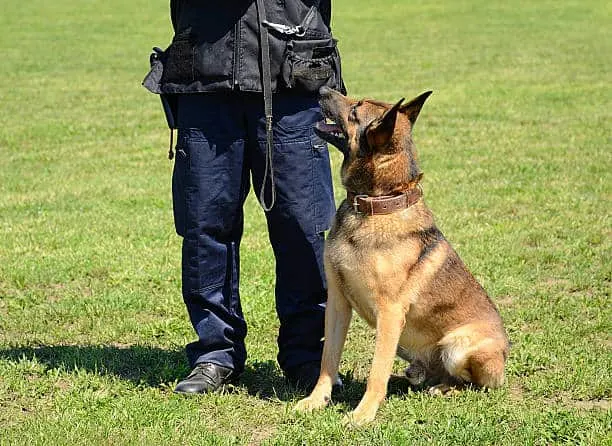
Start Here: the Five Most Common Training Commands Your GSD Needs to Learn
If you are lucky, your German Shepherd breeder started training your GSD puppy before you even brought them home.
If this applies to you, then you want to continue using the same training commands the breeder used.
Otherwise, you can use these basic training commands to get your puppy or rescue dog up and running with “basic training.”
Make sure your GSD has completely mastered these basic training commands before you move on to add new commands. Keep training sessions short, lively, and positive to hold your dog’s interest.
Come
“Come” is a recall command that should be taught before any other command. Teaching your dog this command first will help ensure all the other commands you want your pup to learn to make sense.
It is also an essential safety command for your dog when you are in any place you want to let your dog off-leash. Your German Shepherd must learn to respond to “Come” no matter how far apart the two of you may be.
Sit
The “sit” command is a must for any time you have guests or visitors to your home. It is also vitally important if you want to take your dog to canine-friendly public places, including on vacation with you.
Your dog needs to learn to wait politely in a non-threatening position until you are done with whatever you are doing, whether it is visiting with a friend or standing in line to register your campsite.
Stay
For most dogs, there is nothing in the world more exciting than watching a lizard or squirrel or some other small scampering thing run by in front of them.
This is when the command “stay” comes in so handy. But it also keeps your dog from chasing after cyclists, joggers, vehicles, and other dogs.
Leave It
“Leave it” is a safety command that may save your dog’s life someday. Dogs will be dogs, and you just never know when your German Shepherd may get ahold of something that is dangerous, poisonous, or simply unknown and thus suspect.
The leave it commands teaches your dog to drop it (in fact, you can also use “drop it” if you prefer) immediately.
Down
The main goal of the “down” command is to teach your German Shepherd puppy or rescue dog that it is not acceptable to jump up on people, including you!
While it may be adorable for a small GSD puppy to jump up on you in excitement when you come back from being out, it won’t be nearly so adorable when your dog is 90 pounds.
Housetraining Commands Your GSD Puppy Needs to Know
If you are training a German Shepherd puppy, chances are good the very first command you will teach your GSD isn’t any of the five you just read about earlier here.
It is “go potty.”
The earliest age you could reasonably expect your GSD puppy to gain reasonable control over bladder and bowel functions is around five to six months.
Before that time, all bets are off and accidents are bound to happen.
A good guideline to keep in mind is that your German Shepherd puppy will gain one hour of bladder control for every month of age. So at three months, your GSD puppy might be able to “hold it” for three hours. At four months, you will get four hours. And so on.
By the age of six months, you might get through the night without needing to get up and give your puppy a potty break.
The more you can establish a consistent routine, the more your puppy’s body will learn when the next potty break is coming and start to acclimate to that routine.
When you take your puppy out, try to go to the same potty area every time. Then issue the command “go potty” (or whatever command you have chosen to tell your dog what to do).
You will need to tell your puppy the command at first because otherwise, they won’t know why they are out on the lawn.
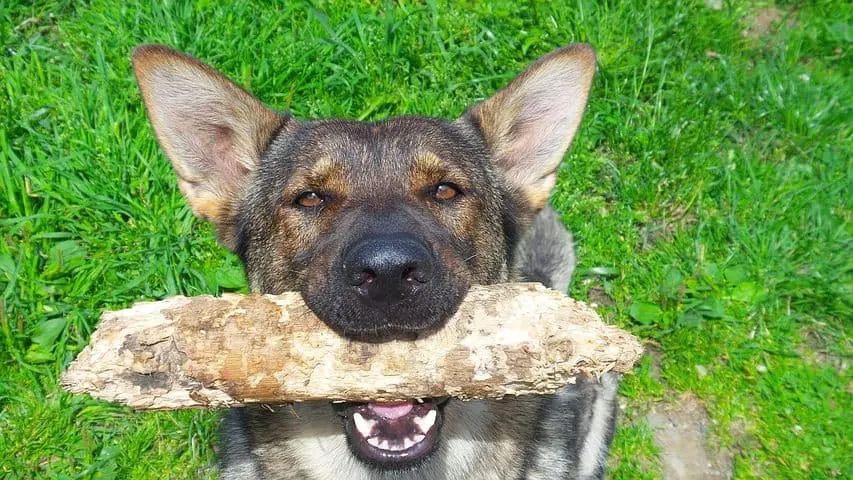
Common Household Dog Training Commands
Once you have potty training under control and your German Shepherd has mastered the basic five safety commands we introduced here earlier, it is time to start some socialization training.
This includes teaching your dog where their special area (or crate) is in the house, how to behave around mealtimes, taking walks on a leash, and how to act during playtime.
These commands should always be issued in a positive, authoritative voice and should be followed up with a “good dog!” training reinforcer the moment your dog obeys.
Never use any type of negative or punishment-based training methods with your dog. They just don’t work as well and could put you or your dog in danger.
Also, modern canine science supports better training results by using positive, praise-based training.
So for the best and fastest results that will quickly deepen your bond with your dog, use praise, pats, playtime, and treats to reinforce training lessons.
Here is the next set of training commands you want to teach your German Shepherd dog.
Crate (or kennel)
You can also say “bed” or “box” or whatever works for your particular situation and setup. The goal is to train your GSD to go to their special area, whether that is a dog bed, a crate, a kennel, or some other spot in the house where they rest and sleep.
Stand
The stand command can be used as a precursor to any other activity such as mealtime, a walk, playtime, going in the car, or something else.
Inside (or go in)
When you are coming back from a walk, a command like “inside” tells your dog to go in the house. You can also use “inside” or “go in” to tell your dog to get in the car.
Outside (or go out)
“Outside” is a command you can use as part of potty training combined with “go potty” or “pee-pee” or whatever command you choose.
Because German Shepherds are herding dogs that have an inbuilt drive to run and chase, you don’t want to rely on a verbal command like “outside” or “go out” in place of putting your dog on a leash.
Some German Shepherds never become completely trustworthy off-leash in an unfenced or public area. So be sure you use “outside” in combination with a secure leash and collar anytime you are going anywhere other than a fenced-in dog park or yard.
Heel
“Heel” is essentially a command to tell your dog to stay by your side. This is a very useful command during leash training. You should train your dog to stay on one specific side of you and in a specific place.
Easy (or settle)
Leash training isn’t the easiest part of training a German Shepherd. These dogs are energetic and active and they love to run and jump and chase. So you can expect a fair amount of pulling and tugging at first as your puppy gets used to wearing a leash.
A command like “easy” or “settle” tells your dog to calm down and stop pulling or tugging on the lead.
Take It
“Take it” is a great command when you are offering meals or treats. You don’t ever want your dog to just rush at the dinner bowl or treat bag or try to snap food out of your hand. This can be dangerous as your dog gets bigger and stronger.
“Take it” teaches your dog to allow you to place the food bowl down in their area and step back. Then you issue the command “take it” and this is how your dog knows it is okay to approach the bowl and eat.
You can use “take it” in the same way when offering a treat from your hand. Your GSD should learn to wait patiently until you say “take it” and then to take the treated item gently from your hand.
Get It
With a large, boisterous, and active dog breed like the German Shepherd, you can count on a lot of daily interactive playtime to keep your dog happy and tired out at bedtime.
When you are playing games like fetch, the command “get it” can teach your dog to go and retrieve the item as part of the play. If you plan to hunt with your dog, “get it” can teach lure or prey retrieval.
German Shepherds are a very popular breed choice for nose work (scent work), search and rescue, service dog work, and canine athletics. “Get it” can also be used in combination with other training cues for these specific training protocols.
No (or stop)
“No” or “stop” is going to be just as important for your dog’s safety as the command “leave it” we introduced in the section on training basics.
Excessive whining, barking, jumping, and other undesirable behaviors should be immediately curbed with a simple “no” or “stop.”
At ease
German Shepherd dogs are a very popular breed choice for service dog roles. In these types of working dog roles, a GSD that is working typically wears a vest and even a sign that tells people not to disturb or pet the dog while they are working.
But you need a cue to tell your dog when work hours are over and they get to just go be a dog for a while. A cue like “at ease” is useful to let your dog know when it is time to play or rest and relax.
Wait (or “watch me”)
The command “wait” can be used in conjunction with mealtimes and interactive playtime as well as during walking training.
Your German Shepherd needs to learn to wait for your training cues before taking any action.
This is vitally important for independent-minded herding and working dog breeds like the GSD in particular.
These dogs have often been given very important working roles, especially when guarding livestock or people, that require making decisions in a split second without human input.
The “wait” command teaches your dog under what circumstances they are always to look to you for guidance first before taking action.
“Watch me” may be preferable for teaching your dog to look directly at you before making a move.
Quiet
German Shepherds are known to be very vocal dog breeds. They will use their voice to communicate with their people. Whining, barking, whimpering, growling and other vocalizations are very common.
But sometimes you just need your dog to quiet down. Your GSD needs to learn that it is not always okay to vocalize freely and “quiet” is a command that you can use to indicate this.
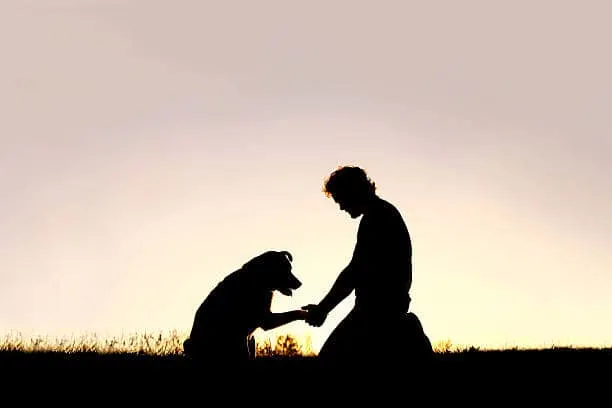
Fun Training and Tricks Commands to Teach Your German Shepherd
Even though the majority of the training commands your GSD needs to learn right away have a definite safety and socialization purpose, once these basics have been mastered you can start to have some fun with dog training.
If your dog is going to be a professional working K-9 or a canine athlete, some of these commands can serve double duty in these roles as well.
But German Shepherds that are going to enjoy the life of a companion canine can also benefit from training to learn new skills and tricks. This is enriching for your dog’s mind and body and can help you to develop a closer bond.
Shake (or paw)
Who doesn’t love watching a dog offer a paw to their handler for a shake? This popular training command doubles as a dog trick that is fun for both of you.
Rollover
This command teaches your dog to drop to the ground and do a complete roll from back to stomach to back. You can also use it to simply teach your dog to drop and roll over onto their stomach.
Play dead
If you want to distinguish between a complete “rollover” and a roll to expose the stomach, “play dead” is a useful and fun command to teach.
Speak (or bark)
Most German Shepherds need very little encouragement to use their voice. But part of your job in training and socializing your dog will be to teach them when to be quiet and when it is okay to speak.
The command “speak” or “bark” can help your dog learn the difference.
Fetch (you can also use “get it” from earlier)
“Get it” can be a perfectly adequate command to use when you are playing games of fetch.
However, if you want to use “get it” for a specific skill set, such as retrieving hunting lures or downed prey, then “fetch” is a good alternate command to use for playtime and other uses.
High five
Like “shake,” “high five” is a fun party trick you and your dog can practice together to entertain friends.
Jump
Just like it is important to teach your German Shepherd dog when it is not okay to jump up on you or furniture or other places, you will want a command to tell your dog when you want or need them to jump.
If you have a large vehicle that is high off the ground, the command “jump” can be useful to teach your GSD to jump into their car crate in the trunk or into the back seat for a ride.
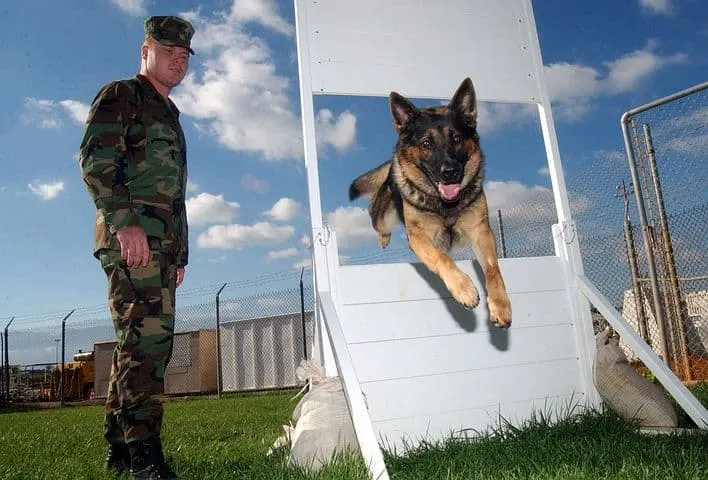
Schutzhund Dog Training Commands
As we mentioned here earlier, the Schutzhund method of protection dog training is particularly popular with many German Shepherd dog breeders, trainers, and owners.
This very traditional, structured method of protection dog training usually requires a canine training candidate with a strong, assertive personality and a high energy level – so the German Shepherd dog breed is perfect for this type of training.
The Schutzhund training method is actually designed to create a calm, well-mannered, properly socialized, and confident adult dog.
If you want to train your dog using the Schutzhund method, it is traditional to issue the commands in German rather than in another language. Even if you don’t speak German, you will need to learn the commands in German so you can be your dog’s handler.
Here is a basic list of the German Schutzhund training commands you will start out learning with your dog. The English word will be listed first, followed by the German word and a pronunciation guide you can use.
You will notice that some of the commands have multiple options. It is best to pick one of the options to start with and always use that one rather than teach your dog all of them, which may get confusing later on.
Down! / Platz! / Plots
No! / Nein! / Nine
Drop it! or out! or let go! / Aus! / Ows
Watch! or attention! / Achtung! / Ahk-toong
Heel! / Fuss! / Foos
Sit! / Sitz! / Zetz
Stay! / Bleib! / Blibe
Here! / Hier! / Heer
Fetch! / Bring! / Brring
Bark! / Gib laut! / Gib lawt
Jump! or up! / Hopp! / Hup
Pay attention! or watch! / Pass auf! / Pahs owf
Stop that! or shame! / Pfui! / Fooey
Search! / Such! / Zook
Go on (blind search)! / Voran! / For-ahn
Go forward! or run out! / Voraus! / For-ows
Attack! or Take Hold! / Fast! / Fahs
German Shepherd dogs have very keen hearing and should be able to respond to each of these commands even if you simply whisper them.
In most cases, Schutzhund training also incorporates hand signals for the times when you may be too far apart to yell a command to your dog effectively (or for times when safety prohibits a verbal voice command).
Take Your German Shepherd Dog’s Training One Day at a Time
Just like you have days when you feel on top of the world and days when you just wake up on the wrong side of the bed, your GSD puppy may also have days when training just goes better or not so well.
It is important to remember that, in addition to learning training commands, your puppy is going through a tremendous amount of change in their body, their surroundings, and their whole life.
Short, positive training sessions with lots of daily repetition will help your GSD master the basics as quickly as possible.
Then you can add in more advanced commands when your pup is ready.














